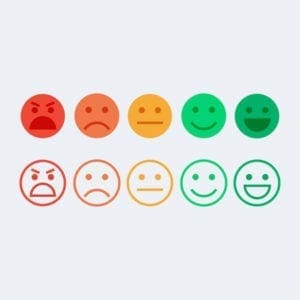 Recently Google published the Google Playbook for Travel — a detailed overview of the trends and learnings of consumer behaviour while booking and researching travel. Within this Playbook, Google looks in detail at micro-moments — points in time when people turn to their device with an intent to answer an immediate need. These micro-moments are fast becoming the basis of how we research, plan and make decisions on different aspects of our lives. Below I’ve outlined some of the key takeaways from Google’s Playbook for Travel and pulled out some best practices for hotel marketers to capitalise on these micro-moments for your hotel marketing strategy.
Recently Google published the Google Playbook for Travel — a detailed overview of the trends and learnings of consumer behaviour while booking and researching travel. Within this Playbook, Google looks in detail at micro-moments — points in time when people turn to their device with an intent to answer an immediate need. These micro-moments are fast becoming the basis of how we research, plan and make decisions on different aspects of our lives. Below I’ve outlined some of the key takeaways from Google’s Playbook for Travel and pulled out some best practices for hotel marketers to capitalise on these micro-moments for your hotel marketing strategy.
Understanding Google micro-moments in travel
- In Q1 2016, 40% of travel site visits in the U.S. were done on mobile
- 60% of travel destination information searches came from mobile
- 2/3 travel videos on YouTube are watched via mobile
- Travel bookings increased to 10% on mobile
People are using their mobile devices more than ever to research and plan travel. These statistics continue to grow year-on-year however, Google found that even with all this increase in activity, the length of time that people spent researching actually decreased by 5%.
This means people are going more frequently to their mobile to research and book but are doing so in shorter bursts to make their travel decisions faster than ever. These shorter, more frequent visits are what Google is referring to as ‘micro-moments‘.
For us in the travel industry, understanding these shorter bursts of activity or micro-moments has dramatic implications on our marketing strategies and how we continue to adapt and learn from consumer behaviour in travel. To get a better look, Google broke down these micro-moments into four key types of travel micro-moments:
- I want to get away moments
- Time to make a plan moments
- Lets book it moments
- Can’t wait to explore moments
By focusing on each area, brands are able to delve deeply into each one and learn more about how decisions are made and preferences are set.
How do we capitalise on these micro-moments?
In an extremely competitive and crowded market space, travel is one of the hardest sectors to master as a marketer. More than ever, brands have to fight for space and earn individuals consideration in every micro-moment they experience. To master these micro-moments, Google suggests:
BE THERE. Identify the micro-moment that fits your business and commit to being there to help when they occur. Basically, this means show up! It’ll get your brand in the game to be chosen, not just seen.
BE USEFUL. Do more than just show up, be relevant to that person’s needs in that specific moment and connect them to the information or inspiration they are looking for.
But we know that we can’t all be there and be useful for every single travel micro-moment. We don’t have enough time or budget to do that. We can however focus on one area, and do that really well. Which area you focus on will depend on your strategy and what works best for your brand, but we have seen that by focusing your marketing spend on improving the guest experience once they’ve booked, hoteliers can drive word-of-mouth, see an increase in guest satisfaction, brand loyalty and guest retention over time.
- 67% Are more loyal if they receive useful travel info
- 85% Decide on activities once they’ve arrived
- 90% Expect their travel provider to give info while on the trip
So how do we compete within ‘I can’t wait to explore moments?’
- Be there for mobile travellers: Smartphone searches at hotels increased by about 30% in the last year. Travellers increasingly rely on their mobile devices to help them get their bearings when they arrive at their destination. If you are providing information for guests via a website make sure mobile comes first. Some of the biggest search queries when guests arrive is ‘things to do near me’. Providing this type of data via a mobile platform will help increase visibility of your brand.
- Make information accessible across sites and apps: Mobile sites were used slightly more than apps when looking for information on a trip, but either way — on a website or an app, make it easy for your guests to access information they need and the content that will help them make the most of their trip
- Provide useful information for first time visitors: Most travellers venture to destinations they haven’t been before, so don’t expect them to know what to do! This is a huge opportunity to provide them with useful resources and local knowledge on the area and things they can do.
Sometimes all of the above just can’t be achieved, especially if your budgets are limited or the technology just isn’t available. If that’s the case, use your team in house to enhance the guest experience, share local knowledge and invite the guests to ask you about anything they need. This type of customer service goes a long way even if it isn’t done through technology.
Summary
So before you head off to make drastic changes to your hotel marketing strategy, have think about these key points and remember that staying in touch and learning from consumer behaviour is the best way to keep engaged with your guests:
- People are using their mobile devices more than ever to research and plan travel, and they are doing so in short, frequent bursts know as micro-moments.
- There are four types of travel micro-moments; ‘I want to get away moments’, ‘time to make a plan moments’, ‘lets book it moments’ and ‘can’t wait to explore moments’.
- Be there and be useful for at least one of these types of travel micro-moments.
- Focus your marketing budget on the guest experience to help build your brand, drive word of mouth, and increase guest loyalty and retention.
- Think mobile first when providing information to your guests before and during their trip. Travellers can’t wait to start planning their trips, so be there for them and provide useful information that will help improve their overall experience.
About the author
Nicki Graham is the Marketing and Communications Manager at Guestfolio, a guest engagement and marketing platform hat helps hoteliers engage, convert and retain guests. The company’s goal is to personalize the travel experience for guests and provide insights and tools that build lasting brand loyalty for its hotel customers.















